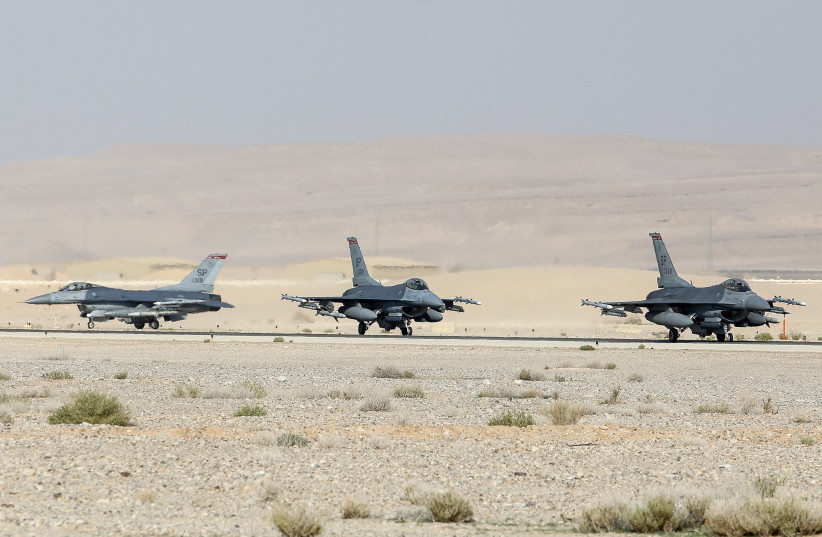The Supreme Court has denied a state request to stop an auction house from selling a control stick from an Israeli warplane that took part in the mission to bomb Iraq’s Osirak nuclear reactor in 1981.
“When the state declared that the item was to be destroyed, its claim that it is property with cultural value was dropped, and in sending it for scrap without the necessary supervision on its part for its actual destruction, it in effect waived the rights to the item,” the Supreme Court ruled on Thursday.
The sidekick control grip from the F-16 plane that took part in the raid, which includes the red weapons release button, is being sold by “Pentagon Auctions” along with “Garage Sale Collection” and has a starting bid of $50,000.
The state requested a temporary order to prevent the auction, claiming it was the proprietary owner. The state also claimed that the control grip is a cultural asset “that is closely linked to a significant event in the country’s history” and that its sale should be prevented because it has “cultural, historical and research value.”
According to Ynet News, which first broke the story of the auction, it was part of plane number 129 that was flown by Col. (res.) Hagai Katz, but the grip is currently owned by another member of the Israel Air Force’s 117th Squadron.
The report said that the date 6.6.81 is engraved at the bottom of the grip, one day before the strike.
A total of eight F-16 jets from the 117th Squadron – flown by Ze’ev Raz, Amos Yadlin, Dobbi Yaffe, Hagai Katz, Amir Nachumi, Iftach Spector, Relik Shafir, and Ilan Ramon – carried out the mission to destroy the reactor on June 7, 1981.
The pilots flew F-16s that they had only recently learned to fly and achieved operational capability just months before. Ten Iraqi soldiers and one French civilian were killed in the strike. All Israeli pilots landed safely at their bases.
The 117th Squadron was closed by the IAF in October 2020.
According to the ruling, not only had the control grip been removed from the plane in 2013 and found to be unfit for use, but the plane was also taken out of service and was sold last year to the company Top Aces, which simulates enemy aircraft in exercises with the US and Canadian air forces.
The auction house claimed that the state’s request was “a gross interference in trade, free market, and the economy.” The auction house also said that it’s customary in the IAF to give retiring senior officers gifts such as items they used during their service.
The auction house also provided the Supreme Court evidence of three similar cases where gifts from retired officers, including by a squadron commander, were given to them without any objection by the state.

